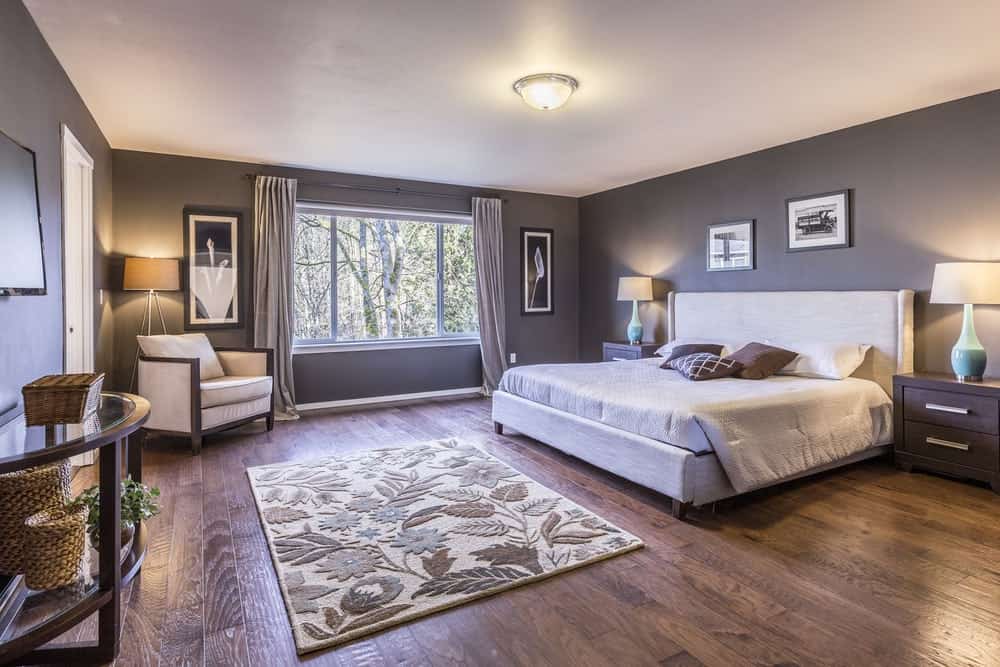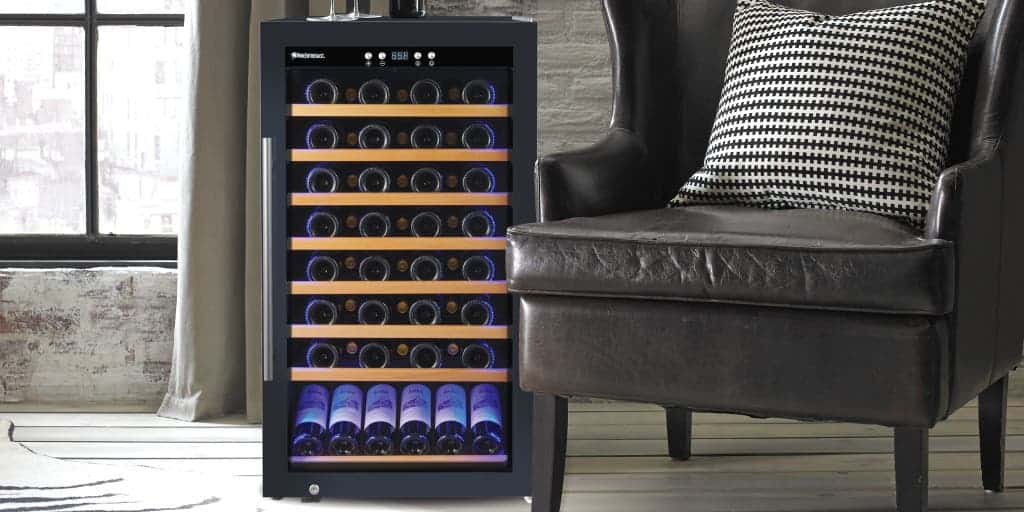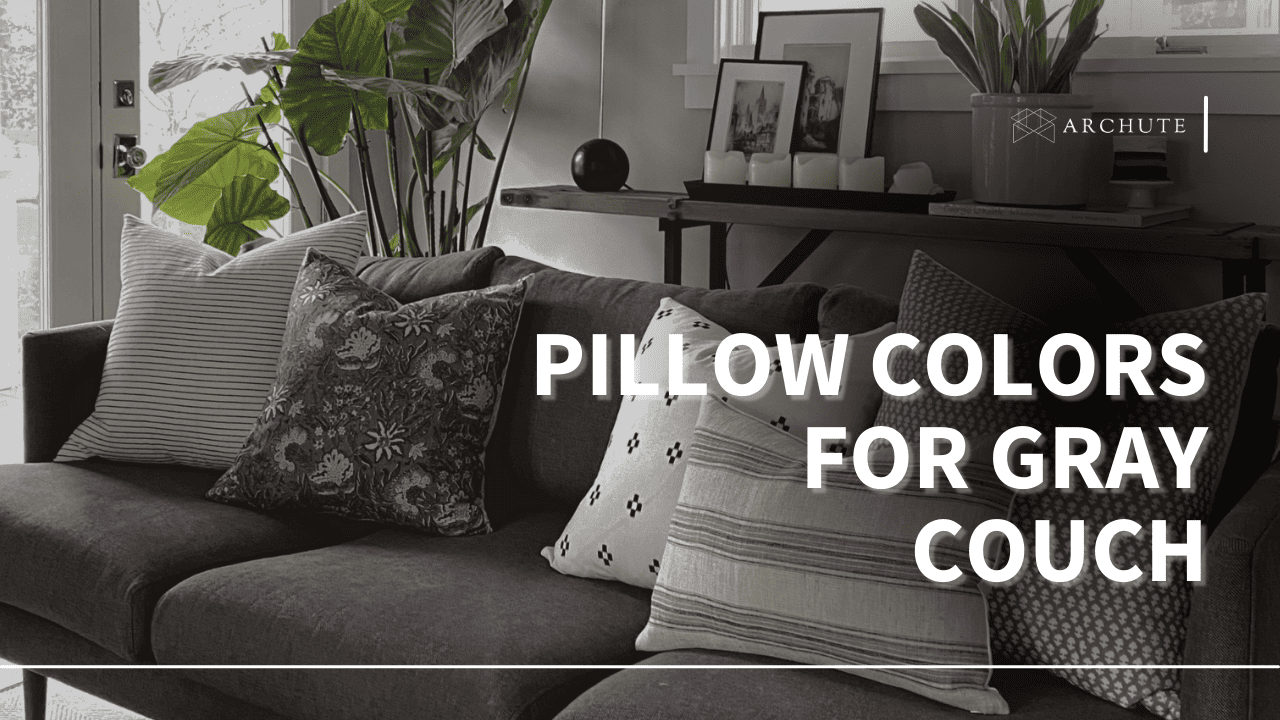Every tiny detail in your home reflects your preferences and style, adding to its allure. Curtains are essential to change how your living spaces are decorated. They fulfill a functional need and give your house personality and style. But with so many color options, picking the perfect curtain color might be intimidating.
Do not worry! Contrary to popular belief, choosing the perfect curtain color to enhance the beauty of your home is simple. In this post, we'll walk you through the process of selecting curtain colors so you may make your home aesthetically pleasing and welcoming while also reflecting your personal preferences. Now let's explore the fascinating world of curtain colors together!
Things That You Should Consider While Selecting Curtain Colors
For the ease of our readers, we have mentioned all the tips and things together in this article that will help them to make a final and wise decision while selecting the color of the wall curtains. Let's begin our guide without delay so that you can revolutionize the overall visuals of your interiors.
1. Consider the Room's Usage & Purpose

Image credit: thespruce.com
Consider the use and purpose of the space first before deciding where to install the curtains. Use cool, calming hues, for instance, to create a pleasant atmosphere in your bedroom. Warmer colors may be more appropriate for constructing a dynamic and vivid living space.
2. Try To Match with the Existing Color Palette
Consider the room's existing color scheme, which includes the walls, furniture, and accessories. Choose curtain colors that improve and match the entire design. For a unified effect, choose curtains in the same shade. To create an interesting contrast, choose curtains in complementary colors for your gray walls.
3. Think About Lighting and Space
Think about the room's size and natural lighting. Lighter-colored curtains can make a room in a small space appear more prominent and airy. If you have a lot of natural light, blackout curtains or darker curtains and sheer drapes in muted colors can block off the light while still letting it filter in. Brighter or bolder curtain colors can provide brightness and warmth to spaces with little natural light.
4. Textured Curtain Can Affect Too

Image credit: made-in-china.com
Colors for curtains are not just restricted to solid hues. Think about experimenting with various designs and textures. Velvet or linen materials with texture can give a space depth and visual appeal, while patterns can make a statement or add a whimsical touch. Ensure the texture or pattern you select blends with the overall design concept.
5. Test Samples
It's a good idea to test curtain samples in your area before making a final decision. It's essential to check how colors appear in your room because colors might appear differently in different lighting situations. Choose the sample that best meets your preferences and lighting conditions by hanging up a few samples and observing them throughout the day.
6. Be Your Stylist
Depend on your intuition and think about your style. Your house should be a reflection of your personality and a place where you can relax. Don't be scared to use a certain hue that appeals to you when choosing your curtains. You should always feel happy and satisfied when you enter a room because it is your place.
7. Durability and Versatility

Image credit: amazon.com
Consider the durability and adaptability of your choice when choosing the color of your curtains. It's important to select colors that will endure the test of time because fashions come and go. If you choose traditional hues for your home, such as neutral tones or earthy hues, you'll have more design options in the future. The versatility of these hues ensures that your drapes will stay fashionable even if your home's interior design changes.
8. Personal Preference
Consider the durability and adaptability of your choice when choosing the color of your curtains. It's important to select colors that will endure the test of time because fashions come and go. If you choose traditional hues for your home, such as neutral tones or earthy hues, you'll have more design options in the future. The versatility of these hues ensures that your drapes will stay fashionable even if your home's interior design changes.
Different Colors Have Got Different Impacts
Our perceptions and emotions are significantly influenced by color. They can arouse certain emotions and establish a particular mood in a space. It's crucial to comprehend the effects of various colors before choosing the color of your curtains:
1. Neutral Hues
White, beige, and grey are classic and adaptable neutral color choices. They instill a feeling of tranquility and fit well with practically any interior design aesthetic. Neutral window treatments give the area a sleek and upscale appearance while letting other components, such as furniture and accessories, take the spotlight.
2. Warm Hues
Warm hues like red, orange, and yellow infuse a room with vitality and brightness. They are ideal for living or dining rooms since they may produce a warm and welcoming ambiance. Yet, to avoid overpowering the space, warm colors must be used sparingly.
3. Cool Hues
Cool colors like purple, blue, and green are relaxing. They are perfect for bedrooms or other areas where you want to create a calm atmosphere because they encourage relaxation and tranquility. Any space can benefit from the freshness and sophistication of cool-colored drapes.
To Sum Up!
The color of your curtains can significantly influence the atmosphere and design of your home. You can confidently choose the perfect curtain color for your home if you understand the impact of color and adhere to these suggestions.
Whether you choose cold, peaceful shades, warm, elegant neutrals, or comfortable tones, let your curtain color selection represent your distinct style and produce a room that seems like a true reflection of you. We hope that you have found this guide helpful!
Frequently Asked Questions on Curtain Colors

Image source: amazon.com
a) Which color is best for curtains?
The choice of color for curtains is highly subjective and dependent on personal preferences, as well as the desired atmosphere and aesthetic of a room. While there is no definitive "best" color for curtains, several factors can help guide decision-making.
Firstly, consider the existing color scheme and decor of the room. Curtains can either complement or contrast with the surrounding elements. For instance, if the room features neutral tones, choosing curtains in a similar shade can create a cohesive and calming ambiance. On the other hand, opting for contrasting colors can add a vibrant and dynamic touch.
Secondly, think about the desired mood or atmosphere. Cool colors such as blue or green can promote a sense of tranquility and serenity, making them suitable for spaces intended for relaxation. Warm colors like red or orange can bring warmth and energy to a room, making them suitable for areas where socialization and liveliness are desired.
Additionally, natural colors like beige, brown, or gray can provide a versatile and timeless appeal, easily blending with various decor styles. These colors are often preferred in minimalist or modern settings.
b) What color curtains are the most popular?
The popularity of curtain colors can vary depending on factors such as current design trends, personal preferences, and the overall aesthetic of a particular space. However, several colors tend to be consistently popular choices for curtains.
Neutral tones such as white, beige, and ivory are perennial favorites for curtains. These colors provide a clean and timeless look, allowing them to blend well with various interior styles. Neutral curtains can create a sense of spaciousness and work well in both traditional and contemporary settings.
Gray curtains have also gained popularity in recent years. Gray offers a versatile and sophisticated option that complements various color schemes. It can add depth and modern touch to a room without overwhelming decor.
Additionally, various shades of blue are frequently chosen for curtains, particularly in living rooms. Blues evoke a calming and serene atmosphere, making them ideal for creating a relaxing ambiance. From soft pastel blues to deep navy hues, this color range can suit different moods and design preferences.
c) What color curtains make a room look bigger?
Choosing suitable color curtains can significantly impact the perceived size of a room. When it comes to making a room appear larger, specific colors and techniques can be particularly effective.
Light-colored curtains are among the most popular choices for creating a sense of spaciousness. Colors like white, cream, beige, and pastel shades have a reflective quality that helps bounce natural light around the room, making it feel more open and airy. These colors also tend to blend seamlessly with the walls, creating a continuous visual flow and avoiding abrupt contrasts that might make the space cramped.
In addition to choosing light-colored curtains, another technique to consider is ensuring the curtains match with the wall color. By selecting curtains that closely resemble the color of the walls, you can create an illusion of expansiveness and continuity. This approach eliminates visual disruptions and helps the eye perceive the room as more significant than it is.
Furthermore, incorporating sheer or translucent curtains can create a more spacious feel. These types of curtains allow light to pass through while maintaining privacy. The sheer fabric adds a touch of elegance and ethereality to the space, enhancing the overall impression of openness.
d) What color curtains go with everything?
When choosing curtains that go with everything, neutral colors are often the safest and most versatile option. Neutral shades like white, cream, beige, gray, or taupe blend well with various color schemes and interior designs. These colors have a timeless appeal and can create a harmonious backdrop for any room.
White curtains, in particular, are an excellent choice as they offer a clean and fresh look while allowing natural light to filter through. They can complement light and dark color schemes and provide a sense of openness and airiness to a space.
For those who prefer a slightly warmer tone, cream or beige curtains can add warmth and softness to a room without overpowering the existing decor. These colors work well with earthy tones, pastels, or even bolder hues, making them adaptable to different styles and moods.
Dark gray curtains are another versatile option, offering any space a contemporary and sophisticated touch. From light gray to charcoal, they can effortlessly match various color palettes, from vibrant accents to more subdued tones.
e) What color is best for bedroom curtains?
Neutral colors such as white, beige, or gray are popular for bedroom curtains as they provide a calm and soothing ambiance. These colors blend well with various interior styles and allow for versatility in wall and furniture color schemes. Neutral curtains also create a sense of spaciousness and brightness in the room, making them particularly suitable for smaller bedrooms or spaces with little natural light.
For those looking to add a touch of warmth or coziness to their bedroom, earthy tones like brown or tan can be an excellent option. These colors evoke a sense of comfort and relaxation, creating a welcoming environment for rest and sleep.
Alternatively, individuals seeking a bolder statement or a pop of color in their bedroom can consider curtains in shades of blue, green, or purple. Navy blue curtains are often associated with tranquility, serenity, and a sense of harmony, which can contribute to a peaceful and restful atmosphere.
f) What color curtains should I get for the living room?
Choosing suitable color curtains for your living room can significantly impact the overall aesthetic and ambiance of the space. Several factors should be considered to make an informed decision.
Firstly, assess the existing color scheme and decor in your living room. Consider the dominant colors in the furniture, walls, and flooring. Opt for curtains that complement or enhance these colors. Choose curtains in a similar shade or a contrasting color that harmonizes with the existing palette for a cohesive look.
Secondly, consider the desired mood or atmosphere you wish to create. Colors play a vital role in evoking emotions. Use soft and muted hues like light blues, greens, or neutrals if you want a calming and serene ambiance. Consider bolder colors like reds, oranges, or yellows to add vibrancy and energy.
Additionally, consider the natural light in the room. If your living room receives ample sunlight, you may want to choose lighter-colored curtains that allow some light to filter through, creating a bright and airy feel. On the other hand, if privacy is a concern or if the room tends to be too bright, opt for heavier curtain fabric or darker shades that provide better light control.
















